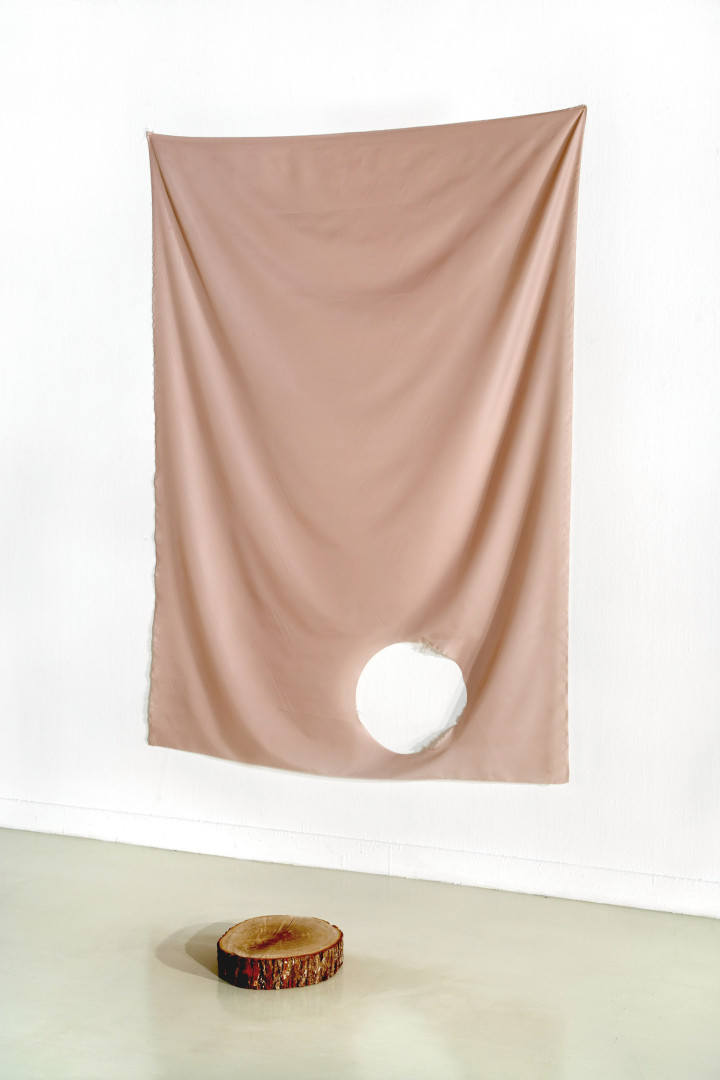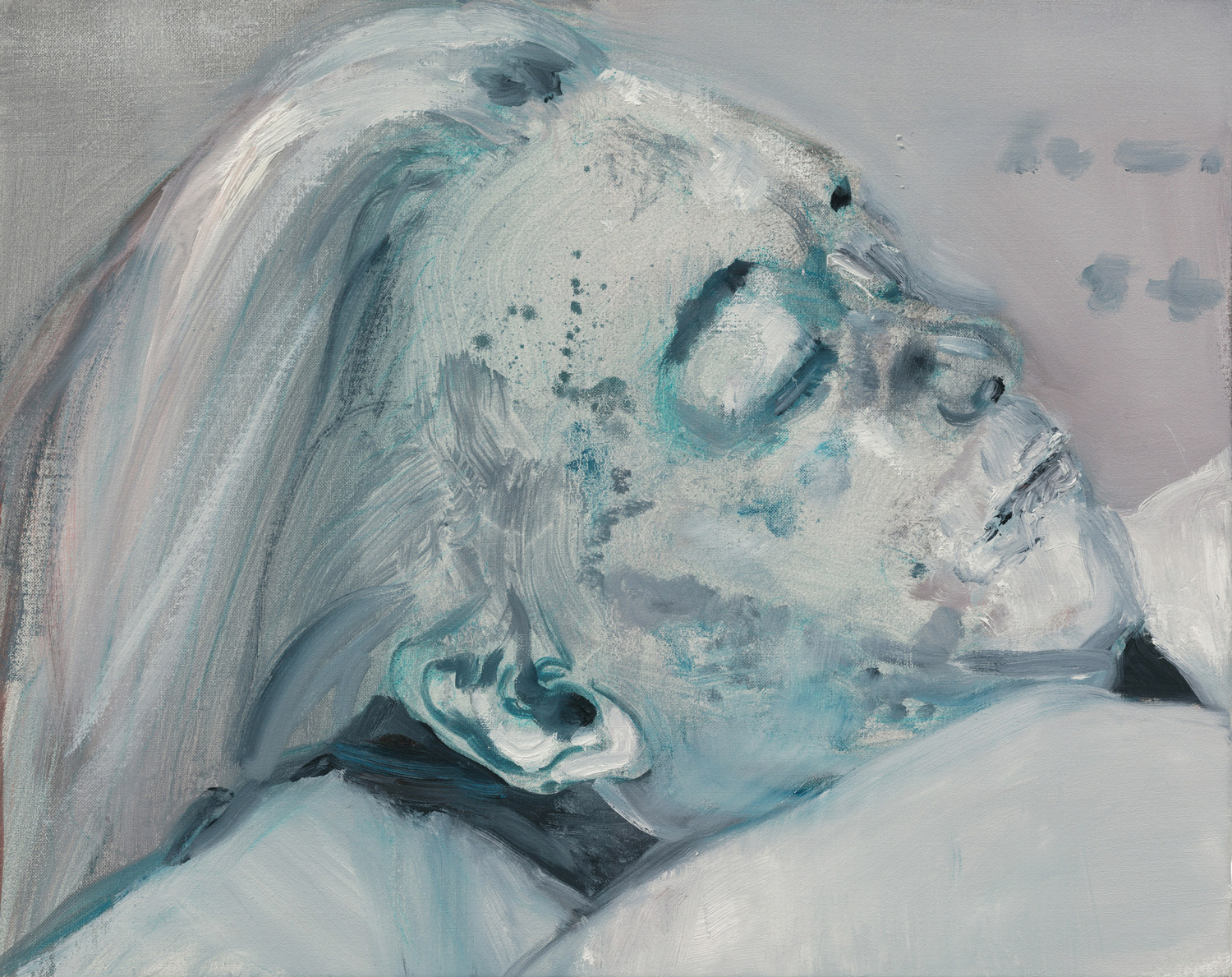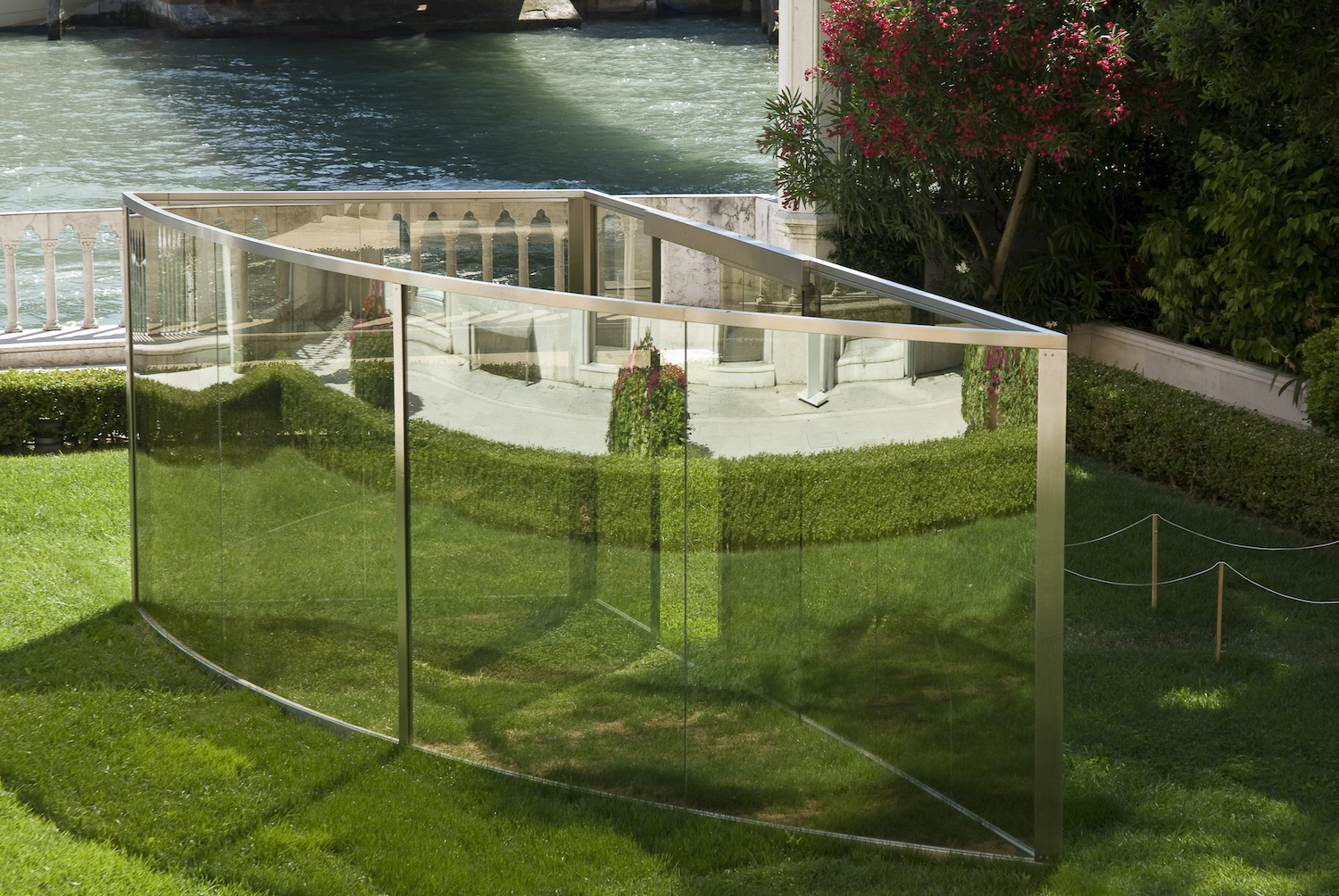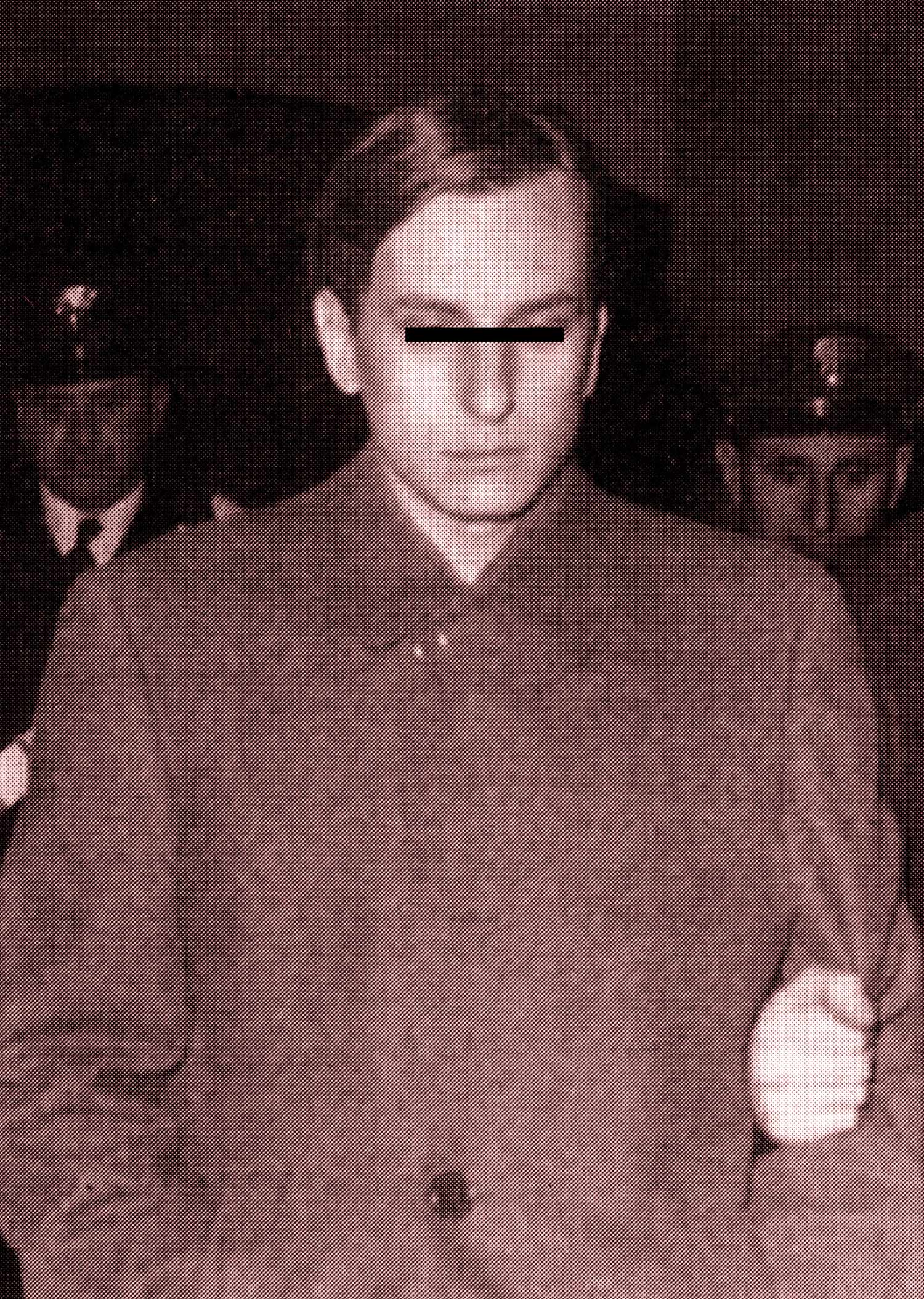
A black puddle, which smells strongly of gas, spreads on the floor. A circular piece of turquoise fabric with frayed borders hangs on the wall. An orange spot with a spicy odor appears on the surface of a piece of sandpaper.
The work of Gyan Panchal, exhibited since 2000, initially appeared to be animated by the idea of a future archeology of ruins, in an aesthetic mode that is both sensual and discreet.
More recently, the artist distanced himself from this romantic fiction and moved toward an abstract sculpture of a more sober nature, not without emphasizing the connotative dimension of materials and all of their indirect, subjective, cultural and implicit significations. Thus, by linking itself to diverse fields of knowledge, Gyan Panchal’s sculpture goes beyond the question of autonomy. His sculpture cannot be limited to a strict formalism per se, given that his forms come from the material itself. The artist perceives the material as both frame and envelope, with the intention of inhabiting it.
Numerous sculptures are therefore based on principles of construction. Such is the case with gaet (2008), a blue, extruded polystyrene door or eca (2005), two blocks of expanded polystyrene, one leaning on top of the other, while the middle section has been dug out of the lower one and placed behind the sculpture, suggesting a kind of habitat. A genuine investment in materials animates Panchal’s work, affiliating it more closely to Arte Povera than Minimal Art. The sculptures of the Parisian artist, born in 1973, testify to this preoccupation — a rarity among the work of the preceding generation — with matter itself, from paper to textiles to polystyrene to plastic to wool to glass.
The artist is equally interested in the history of a given material, its social role, its economic and ecological implications, and above all, what it is liable to become through the most unexpected processes. His practice consists of burning polythene (laste, 2006), heating up sheets of polystyrene foam (plantian 1, 2008) or even rubbing a curcuma root on a piece of sandpaper. Thus his work is inscribed with a kind of temporal conscience, while any given experiment stirs up, in the words of the artist, “expectations of a revelation.”
Panchal seems equally preoccupied with the question of origins, not in the sense of identity, but in the broader sense, as in the origins of signs. He is interested in what sense of origin remains in a given material. leh (2003), a litter of raw petrol on the floor, destined to evaporate, reveals the origin of a material like polystyrene; synthesized in the ’20s and ’30s, it is also used in a number of Panchal’s sculptures. In the same mode, a work like phol (2008) confronts wood and the cellulose acetate from whence it comes. More fundamentally, Panchal concentrates on roots and remainders, whether it deals with matter or language. The enigmatic titles of his sculptures, bits of language devoid of meaning, often have etymological origins or come from archaic words. The work of Gyan Panchal, which inscribes itself in a particularly rich renewal of sculpture by a generation that includes Karla Black, Katincka Bock and even Gedi Sibony, affirms itself by the originality of its preoccupations. Fragile, discreet and powerful, it seeks to inhabit that which remains of origins.





